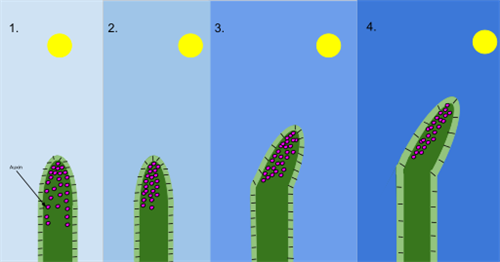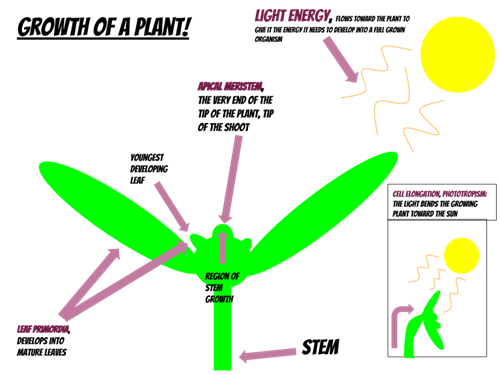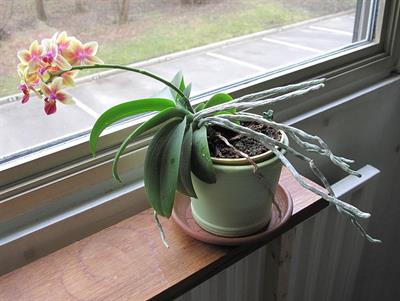PDF chapter test TRY NOW
As we know, unlike animals and other organisms, plants cannot move. But they must adapt to their constantly changing environmental conditions. Animals adapt to these changes by relocating from one place to another when environmental conditions become unfavourable. However, plants cannot do this. Hence, they use other methods like tropism.
Plant tropism:
- These are mechanisms by which plants adapt to environmental changes.
- Unidirectional movement or growth of a whole of part of a plant towards the direction of stimuli is known as tropism.
- Some of the common stimuli that influence plant growth include light, gravity, water, and touch.
Types of tropism:
The phenomenon of tropism is classified into various types based on the nature of stimuli.
- Phototropism: The movement or growth of a plant towards the direction of light is known as phototropism.

Shoot tip growing towards the direction of sun

Growth of a plant related to the sunlight
Example:
The shoot of a plant:
The solar tracking of sunflower in accordance with the path of sun is due to phototropism.
An activity to demonstrate phototropism:
Aim:
To understand the concept of phototropism.
Materials required:
- Conical flask
- Water
- Wire mesh
- Freshly germinated bean seeds
- Cardboard box
Procedure:
- Take a conical flask and fill it with water.
- Cover the neck of the flask with a wire mesh.
- Place two to three freshly germinated bean seeds o the wire mesh.
- Take a cardboard box which is open from one side and place the flask inside the box in such a way so that the open side of the box faces the light.
- Leave the entire set up for two to three days.
- After two to three days we can observe that the shoots that are emerged will bend towards the light and the roots will emerge away from the light.
- Now turn the flask in such a way that the roots are exposed towards the light and the shoot are exposed away from the light.
- Leave the setup for few days and observe what happens to the direction of the old parts of shoot and root.

Positive and negative phototropism
Observation:
The plant's upper portion (shoot) bends towards the light, while the root travels away from it.
This is due to a greater rate of cell division in the section of the stem that is not exposed to sunlight. The stem bends towards the light as a result. Increased release of the plant hormone auxin in the which is not exposed to sunlight results in a faster rate of cell division.
A video demonstrating the experiment
Types of phototropism:
The process of tropism can be considered as positive or negative based on the direction of growth in accordance with the stimulus.
If the growth is towards the signal, tropism is considered positive. On the other hand, if the growth is away from the signal (stimulus), the tropism is considered negative.
The shoot of a plant is positively phototropic as it moves or grows towards the light. However, as roots grow away from the light, it is considered as negatively phototropic.
